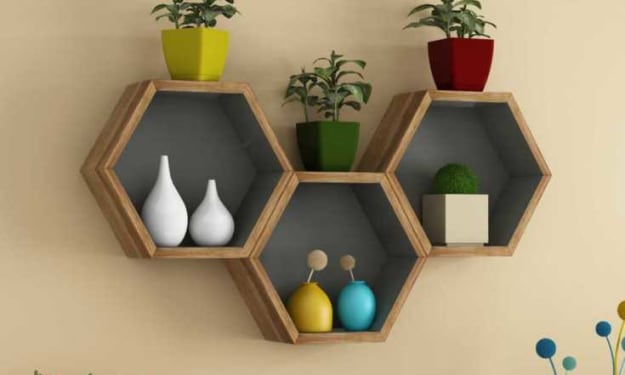The Psychology of Color
Unveiling the Influence of Colors on Our Emotions and Behavior

Introduction
Colors are all around us, influencing our perception of the world and evoking various emotions and behaviors. Whether we realize it or not, the colors we encounter have a profound impact on our psychological state and can even shape our decision-making processes. The study of the psychology of color seeks to understand how different hues, shades, and combinations affect our emotions, cognition, and behavior. In this article, we will delve into the fascinating world of color psychology, exploring how colors can influence our moods, reactions, and overall well-being.
The Influence of Color on Emotions
Colors have the power to evoke strong emotional responses within us. Each hue carries its own unique psychological associations, triggering specific feelings and moods. Understanding these associations can help us harness the power of color to enhance our emotional well-being and create harmonious environments.
- Red: The color red is often associated with strong emotions such as passion, love, and excitement. It can also evoke feelings of urgency and intensity. Research suggests that exposure to the color red can increase heart rate and stimulate the production of adrenaline, leading to heightened arousal and energy.
- Blue: Blue is commonly associated with calmness, tranquility, and serenity. It has a soothing effect on the mind and body, often used to create a sense of relaxation. Studies have shown that blue can lower blood pressure and slow down the heart rate, promoting a sense of tranquility and reducing stress levels.
- Yellow: Yellow is associated with happiness, optimism, and positivity. It can uplift mood and evoke feelings of joy and cheerfulness. This vibrant color has been found to increase mental agility and attention, making it an excellent choice for stimulating creativity and enhancing cognitive performance.
- Green: Green is often linked to nature, growth, and harmony. It is known for its calming and balancing effects, making it ideal for promoting relaxation and stress relief. Being surrounded by greenery or using the color green in interior design can have a restorative effect, helping to reduce anxiety and improve overall well-being.
- Orange: Orange combines the energy and warmth of red with the cheerfulness of yellow. It is often associated with enthusiasm, creativity, and sociability. Orange has been found to stimulate the brain and increase enthusiasm, making it a popular choice for promoting social interaction and communication.
- Purple: Purple has long been associated with luxury, spirituality, and creativity. It is a color often associated with royalty and has been used to convey a sense of opulence and power. Purple has also been linked to increased creativity and problem-solving abilities, making it a suitable color choice for stimulating imagination and inspiration.
- Pink: Pink is often associated with femininity, tenderness, and nurturing. It has a soothing and calming effect, often used to create a sense of comfort and relaxation. Research has shown that exposure to pink can reduce aggression and promote feelings of warmth and empathy.
The Role of Color in Behavior and Decision Making
In addition to influencing our emotions, colors can also impact our behavior and decision-making processes. Marketers, advertisers, and designers have long recognized the power of color in influencing consumer behavior and shaping perceptions. Here are a few ways in which color can affect our actions and choices:
- Branding and Marketing: Companies carefully select colors to convey specific brand messages and influence consumer behavior. For example, fast-food chains often use red and yellow to stimulate appetite and create a sense of urgency, while luxury brands opt for gold or silver tones to convey sophistication and exclusivity.
- Retail and Purchasing: Colors can significantly impact our purchasing decisions. Research has shown that certain colors can enhance product attractiveness and influence buying behavior. For instance, warm colors like red and orange can create a sense of urgency and impulse, leading consumers to make spontaneous purchases. On the other hand, cooler colors like blue and green can promote a sense of trust and reliability, making customers more likely to choose those products.
- Environmental Impact: The colors in our surroundings can affect our behavior and productivity. In work environments, color choices can influence concentration, focus, and overall productivity. For instance, blue has been found to enhance productivity and stimulate mental focus, while green can promote a sense of calm and improve efficiency.
- Spatial Perception: Colors can also influence our perception of space and size. Darker colors tend to make spaces feel smaller and more intimate, while lighter colors create an illusion of openness and spaciousness. This principle is often used in interior design to manipulate the perception of room sizes and create specific atmospheres.
Cultural and Personal Factors
While colors can have general psychological associations, it is important to recognize that their meanings can vary across cultures and individuals. Cultural and personal experiences play a significant role in shaping our perceptions and associations with colors. For example, while red may be associated with love and passion in Western cultures, it can symbolize luck and prosperity in Eastern cultures.
Additionally, personal preferences and individual experiences can influence our emotional responses to colors. Factors such as past experiences, cultural upbringing, and personal associations can shape our subjective interpretations of color.
Conclusion
The psychology of color provides valuable insights into the profound impact that colors have on our emotions, behavior, and decision-making processes. From evoking specific moods and emotions to influencing our choices and actions, colors play a vital role in our everyday lives. By understanding the psychological associations of different colors, we can harness their power to create positive and meaningful experiences, whether in our personal spaces, work environments, or marketing strategies. So, the next time you come across a vibrant hue or carefully selected color scheme, take a moment to reflect on the emotions and behaviors they might be triggering within you.
About the Creator
Melodic Narrator
Introducing the voice that will enthrall your senses and redefine your perception of storytelling. Meet melodic narrator, the captivating maestro of Vocal.Media. Embark on a journey of enlightenment with melodic narrator.
Enjoyed the story? Support the Creator.
Subscribe for free to receive all their stories in your feed. You could also pledge your support or give them a one-off tip, letting them know you appreciate their work.






Comments
There are no comments for this story
Be the first to respond and start the conversation.